The making of 'Moonlight in the Sea' | A guest post by Kartik Shanker, Dakshin Foundation
Posted by Pallavi Kamath on January 15, 2021New on StoryWeaver:
'Moonlight in the Sea' (written by Kartik Shanker, illustrated by Prabha Mallya, and published by the Dakshin Foundation) tells the story of Fatima who lives on an idyllic island in the Lakshadweep, watched over by Nihla, the moon. It introduces young readers to the underwater world of colourful corals, fascinating fish, mysterious manta rays, grizzled old turtles and dancing dolphins.
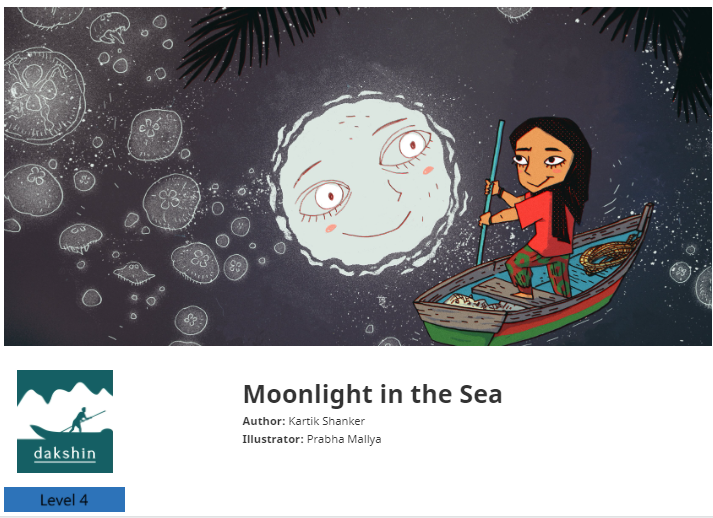
Learn more about the people and places that inspired the making of 'Moonlight in the Sea', in this blogpost by Kartik Shanker, author, ecologist, and founder trustee of the Dakshin Foundation:
As an aspiring wildlife biologist, you learn pretty early on not to expect National Geographic scenes when you visit a forest. It may take months to see your first elephant, years to see a tiger. It took me weeks of turtle walks to see my first olive ridley. But, put on a mask and a snorkel and stick your head under water at a good reef, and it looks pretty much like that last NGS show you watched.
I still remember the first time I went snorkeling in the Lakshadweep in 2001 – ‘the flurry of colour, the shock of shapes’. We were conducting sea turtle surveys there, and I spent every spare moment paddling around in the waters of the Kavaratti lagoon. A decade later, as part of Dakshin Foundation, we started a project on the tuna fishery in the islands. We monitored tuna using a participatory monitoring programme with the fishers, and one of our researchers, Mahima Jaini, conducted in-water surveys of baitfish. Around the same time, my student, Anne Theo had started her research on mixed species groups of reef fish.
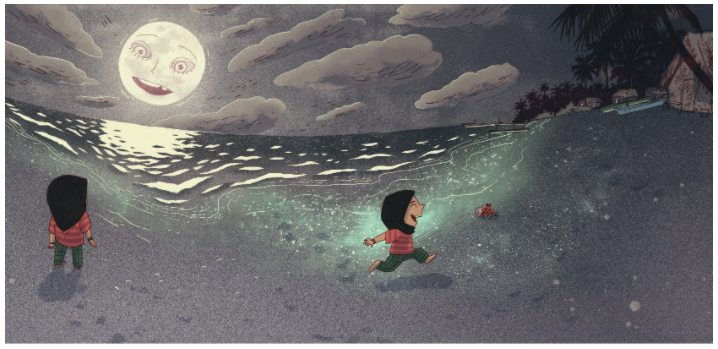
At Agatti, the two of them would use Jaffer’s fishing boat to conduct their dives. Throughout their time there, his support for their field work and dive surveys was invaluable. Jaffer looked after them as he would his family. In the evening, he and his wife would visit with their daughter Nihla, then an adorable 3-year-old. His boat was named after her, Nihla Fatima. The gentle ethos of the Lakshadweep, the still waters of the lagoons, the richness of its marine life, the solitary charm of Suheli all cried out for a story to be told.
Nihla inspired that story – about a little girl in the Lakshadweep, and the possibility that such girls could one day become marine biologists like Anne and Mahima.
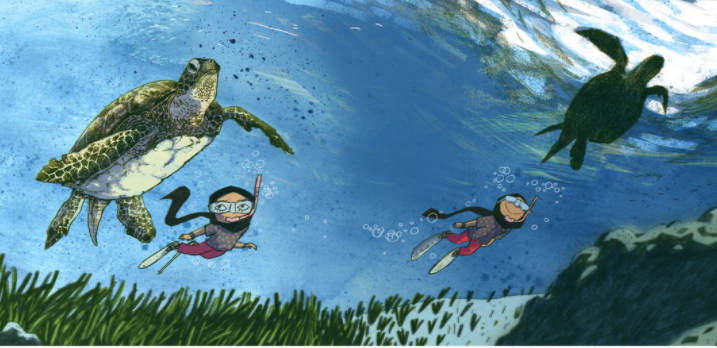
I visited them frequently – happy times were spent diving off Jaffer’s boat. One time, we dived off Bangaram, saw some sharks, and then ate the most delectable fish biryani cooked on the boat. Another time, the three of us made a trip to Suheli, an uninhabited island several hours by boat from Kavaratti. In 1979, my mentor, Satish Bhaskar, had spent 5 months there by himself during the monsoon to survey green turtles. Many of these memories found their way into the narrative.
And then Prabha Mallya made the story come alive with her amazing and evocative illustrations. In my story, Nihla, the moon was a quirky character; through Prabha’s illustrations, she became a co-star. My niece’s daughter Ariana, age 2, was heard to say ‘When I grow up, I wanna be Nihla moon!" I guess that says it all.
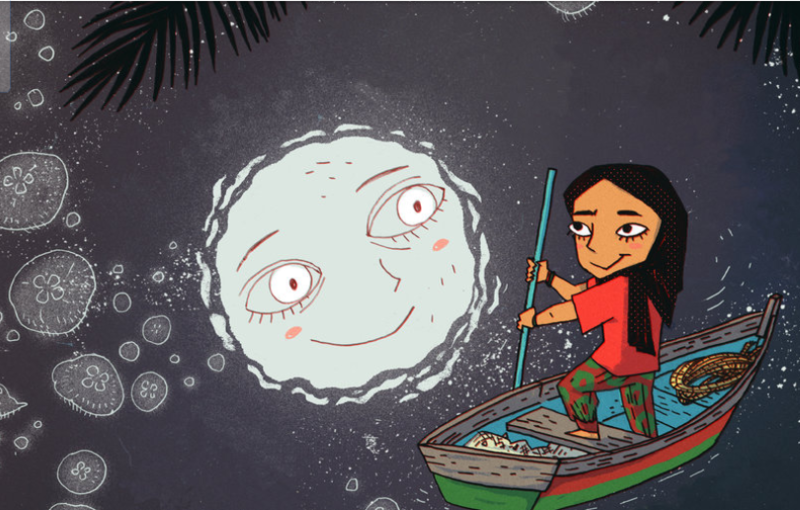
Click to read 'Moonlight in the Sea'
A big thank you, Kartik, Prabha and the Dakshin Foundation, for open licensing this wonderful book and making it available on StoryWeaver!
Illustrations in this post are by Prabha Mallya, from 'Moonlight in the Sea', written by Kartik Shanker, published by the Dakshin Foundation.
Kartik Shanker is a founder trustee of Dakshin Foundation. An ecologist by training, Kartik has interests in both mountain and marine systems. His work with marine turtles in the last 20 years has led to broader interests in coastal and marine conservation. Currently, he serves as an Associate Professor at the Centre for Ecological Sciences (CES), Indian Institute of Science (IISc.), Bangalore. In addition to academic research, he is also interested in strategies to improve environmental education and the public understanding of science. This interest encouraged Kartik to establish Current Conservation, a magazine that bridges conservation and art by bringing together research professionals, writers and artists from different parts of the world. He is the author of the book From Soup to Superstar, a historical account of sea turtle conservation in India. In his spare time, Kartik also seeks to distract young minds through children’s stories which include Lori’s Magical Mystery, Turtle Story, The Adventures of Philautus Frog, and Moonlight in the Sea.
Dakshin Foundation is a non-profit, non-governmental organisation. Their mission is to inform and advocate conservation and natural resource management, while promoting and supporting sustainable livelihoods, social development and environmental justice. They adopt interdisciplinary approaches in our research and conservation interventions, drawing from the fields of ecology, conservation biology, sociology, economics, and law. Their work aims at building community capacity for conservation and enhancing community engagement in environmental decision-making. Their goal is to promote ecologically and socially appropriate approaches to conservation and management in coastal, marine and mountain ecosystems in India.
comments (3)Translate, download and print: A teacher in Himachal Pradesh is taking Tibetan books to children!
Posted by Remya Padmadas on December 01, 2017Last year, we wrote about Tenzin Dhargyal and how he and group of committed teachers at the TCV School, Suja, Himachal Pradesh were translating stories to Tibetan on StoryWeaver. The passionate educators have till date translated over 60 books to Tibetan on the platform. Tenzin had written to us about how he and his colleagues were keen to print some of the books and place them freely in libraries and reading rooms across the region.
Last week we were overjoyed to receive this photograph from Tenzin!

We wrote to him and asked him to tell us more about the project. Over to Tenzin!
"We have printed more than 5 thousand copies of two books which will be distributed freely in all the Tibetan school libraries and reading rooms in the region. Students will have full access to these books in the libraries and already love the books very much. In fact, the more books they have, the happier they are to see and read them! Teachers and librarian can also plan and do activities with the books. My colleagues and I are also planning to create our own stories on StoryWeaver and there is much interest in exploring ways in which we can use the platform. If you look at our Tibetan section, there are 68 books now. We started with just one! Thank you for adding the Tibetan language to StoryWeaver."
It's wonderful to see how educators and language champions are using StoryWeaver to create a repository of stories in languages the children they work with are fluent in! It's especially rewarding to see them find ways to take these translations into classrooms!
If you're using StoryWeaver in your classroom and have a story to share write to us at [email protected] and we'll feature you on our blog!
Be the first to comment.The Asia Foundation: Taking joyful stories to children in Developing Asia
Posted by Remya Padmadas on February 20, 2017The Asia Foundation is an international nonprofit that helps societies work towards a peaceful, just, and thriving region, and currently works to improve the standard of living across Asia, from Sri Lanka to Mongolia. Improving literacy levels is integral to the work the organisation does, and they have spearheaded a number of programmes across the region to this end.
One such initiative is Let’s Read! which pledges to provide storybooks to children across the continent. “Through technology initiatives and book donations, we help infuse students with a love of reading essential for literacy,” says Melody Zavala, director of the Books for Asia program at The Asia Foundation.
As part their Let’s Read! campaign, The Asia Foundation has created e-libraries that are accessible on any device. "The e-library works in low-bandwidth environments and doesn't require an active internet connection for reading and hence are able to reach children even in areas with poor bandwidth and infrastructure. Books available are in the mother tongue languages of the children. “We know that children learn first and best in their mother tongue. So we want to make local publications available to more children and stimulate their imagination in ways that can only be possible in a local context,” commented Melody.
To provide a wide range of these books, The Asia Foundation used the vast collection of stories available on StoryWeaver. “The translate tool on StoryWeaver attracted us, as once a language (e.g. Thai) is available on the platform, we can get stories translated and provide a large number of quality children’s literature to our partner schools,” shared Melody.
Being able to draw on StoryWeaver titles has been invaluable to the Let’s Read! initiative, shares Melody. The initiative incubates innovative digital, print, and community-based solutions to "improving access to high-quality children’s books in mother tongues and national languages and currently consists of integrated e-book library, translation, and content creation projects.
Stories in Khmer
“So far, we’ve translated 9 titles into Khmer which are all available on StoryWeaver. The stories are also available on our Cambodia project site, along with new stories created in Khmer by local authors and illustrators during our e-book hackathons." informed Melody. "In Cambodia the Ministry of Education’s online education portal will also link to these stories, hence making them available to their 1.5 million followers. he stories will also be made to other Khmer educational apps and projects, including Khmer LEARN, which has 38,000 users, and the Library For All app, which is used in 5 rural schools
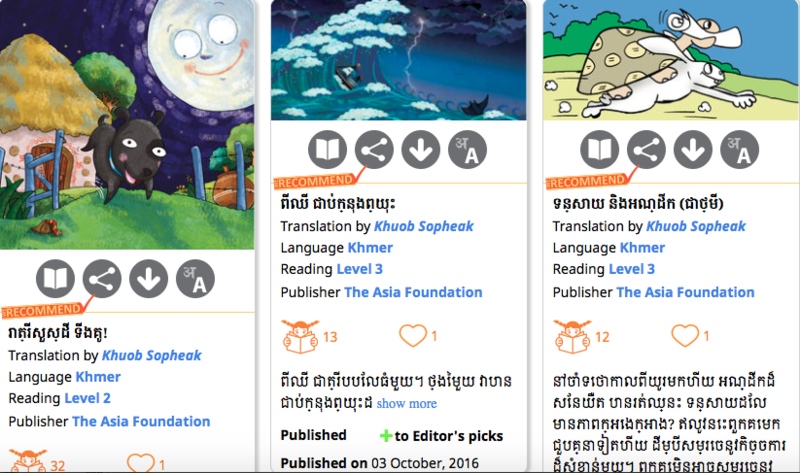
Increasing content in ethnic minority languages
In Thailand, StoryWeaver content will be translated as a part of the Let’s Read initiative there that utilizes a suite of integrated smartphone apps – a translation tool and free story reader app - to increase content in ethnic minority languages. A Let’s Read! translation workshop took place in Chiangmai, Thailand where 10 Pratham Books titles from StoryWeaver were translated from Thai into S’gaw Karen. The programme will initially be implemented in 10 villages and positively impact 1,000 children. S'gaw Karen is spoken by over four million S'gaw Karen people in Burma, and 200,000 in Thailand. The Asia Foundation will be using their own Thai translations on StoryWeaver to create joyful reading material in S'gaw Karen. Content translation for programmes in Bangladesh has also been initiated."
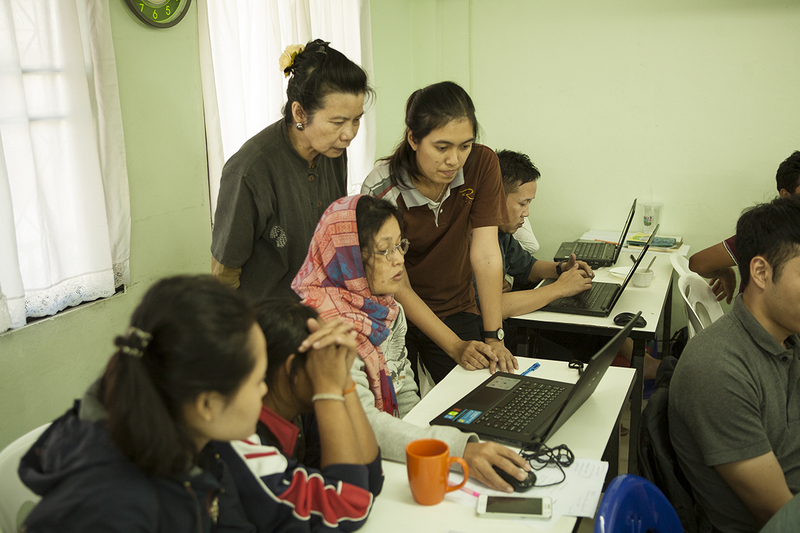
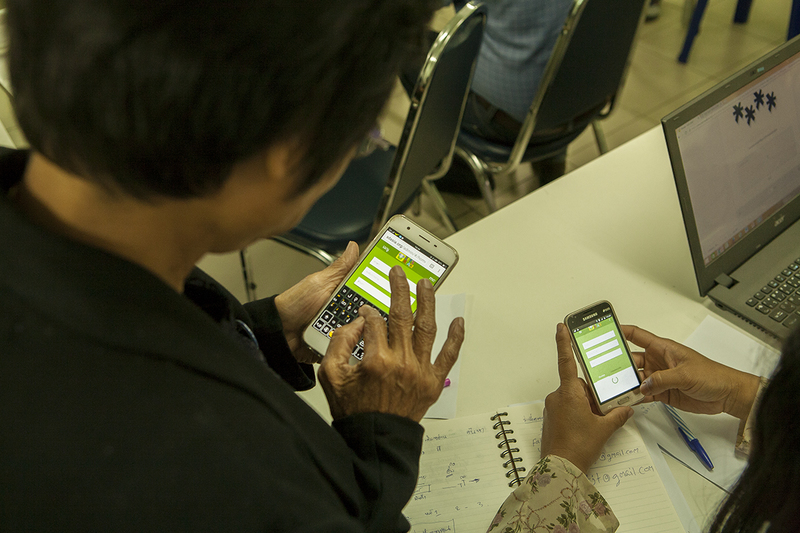
Participants at the ChiangMai workshop. Images courtesy Kyle Barker, The Asia Foundation.
You can read the Khmer translations uploaded by The Asia Foundation here. Keep following us on twitter for more updates about our work with them.
Be the first to comment.